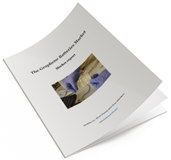Investing in public graphene stocks - Page 24
G6 Materials quarterly revenues up 28% from last year
Graphene developer G6 Materials reported its financial results for Q1 2022 (ended February 2022). The company's revenues were $337,921, up 28% from last year, and the total loss increased 26% to $404,152.
As of February 28, 2022, total assets were $6.9 million. The company says it saw continued strong demand for its innovative formulations, along with impressive customer response to the relaunch of Graphene Supermarket. The company will soon launch its Breathe+ Pro medical grade air purifier product, and together with several major customer deals in the pipeline, it anticipates a very strong quarter.
Many graphene companies see their share price plummet, is it a buying opportunity?
The past couple of years were very good for public graphene companies, many of which saw their share prices spike. This was partly due to a general positive market trend and also due to maturity in the graphene industry and actual commercialization of graphene-enhanced materials and devices.
Since the beginning of 2022, however, the share price of most of the companies we track dropped - in some cases by over 30%. The chart above shows some of the most prominent companies.
AGM reports its latest half-year financial results
Applied Graphene Materials (AGM) announced its interim results for the six months that ended on January 2022. Revenues were £46,000 (up from £42,000 in the previous half year period), while net loss was £1.9 million (up from £1.8 million).
Despite the low revenues and large loss, AGM's management says that there's a steady growth in potential pipeline projects - as these increased to 192 from 135 last year. The company also updates that it has been progressing with its developments for the battery and hydrogen fuel and storage industries.
Advanced Material Development selected for the Faraday Battery Challenge Investment
Advanced Material Development recently announced its selection as one of eleven SME’s for the 2022 Faraday Investment Program. The program will invest up to £330 million in research and innovation projects and facilities to promote the battery business in the UK.
Through its expertise in 2D nanomaterials, AMD has been able to produce a variety of robust printed structures for electrodes, strain sensing and thermal interfaces that show improved conductivity and mechanical flexibility whilst dramatically improving sustainability.
Haydale secures Innovate UK grant to develop smart composite tooling
Haydale has announced that it has been awarded funding of £186,403 by Innovate UK, the UK's innovation agency, to develop smart composite tooling for the aerospace industry using functionalized nanomaterials.
The ESENSE project (Out-of-autoclave self-heated tooling enabling temperature homogeneity and embedded graphene sensors) aims to enhance out-of-autoclave (OOA) manufacturing processes with monitoring and through-life sensing capabilities using Haydale's patented HDPlas functionalization process to develop high temperature inks and pressure sensors. The project is due to start in April 2022 and is expected to run for 24 months.
Zero Emissions Developments seeks funding to establish graphene-based solar battery manufacturing plant
Zero Emissions Developments (ZED) is an Australia-based company that has announced the development of a technology to build longer lasting, greener, more efficient and more affordable graphene-based solar and EV batteries. It is now seeking AUD$30 million (around USD$22,300,000) in private investment to build a manufacturing plant that will produce these batteries.
The planned manufacturing plant will produce the PowerCap batteries in southeast Queensland through the entity, PowerCap Un Ltd.
Graphene-Info updates all its graphene market report
Today we published new versions of all our graphene market reports. Graphene-Info provides comprehensive niche graphene market reports, and our reports cover everything you need to know about these niche markets. The reports are now updated to April 2022.
The Graphene Batteries Market Report:
- The advantages using graphene batteries
- The different ways graphene can be used in batteries
- Various types of graphene materials
- What's on the market today
- Detailed specifications of some graphene-enhanced anode material
- Personal contact details into most graphene developers
The report package provides a good introduction to the graphene battery - present and future. It includes a list of all graphene companies involved with batteries and gives detailed specifications of some graphene-enhanced anode materials and contact details into most graphene developers. Read more here!
NanoGraf wins $1 Million contract from U.S Department of Defense to develop battery technology for the U.S. Army
NanoGraf has announced that it won a $1 million development contract from the Department of Defense to produce a more powerful, longer-lasting 4.3Ah lithium-ion battery. The cell will aim to provide U.S. military personnel with enhanced run-time for the equipment they rely on to operate safely and efficiently.
This is the second Department of Defense project won by NanoGraf. In 2021, the company developed the world’s longest-running 3.8Ah 18650 cylindrical lithium-ion cell, at 800 watt-hours per liter (Wh/L). This cell will is meant to go into volume production in the Spring of 2022.
Avadain kicks off crowdfunding campaign to raise up to $5 million
U.S-based graphene flake producer Avadain has announced its new crowdfunding campaign to raise up to $5 million on the NetCapital funding portal.
Avadain says it will use the funds for further upscaling, patenting, samples and operating expenses.
European grant to enable the development of supercapacitors based on nitrogen-doped graphene
Researchers from CATRIN at Palacký University Olomouc, in cooperation with colleagues from Bar-Ilan University in Israel and the Italian company ITELCOND, are working to develop high-capacity, safe, and environmental friendly supercapacitors based on a graphene-derived material developed in Olomouc, which is already protected by a European patent.
The work needed in order to translate this discovery into practice is made possible thanks to a grant funded by the European Innovation Council (EIC) Transition Challenges with an allocated budget of nearly 2.5 million Euros.
Pagination
- Previous page
- Page 24
- Next page

